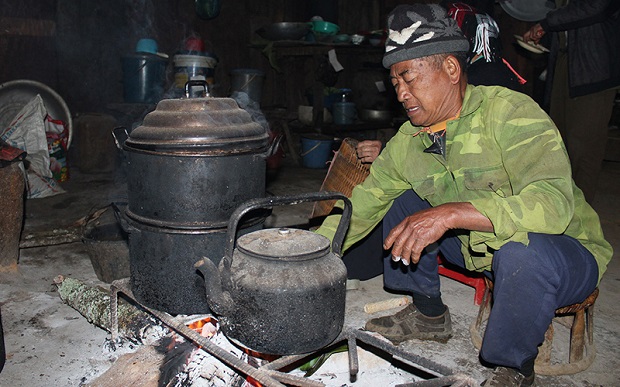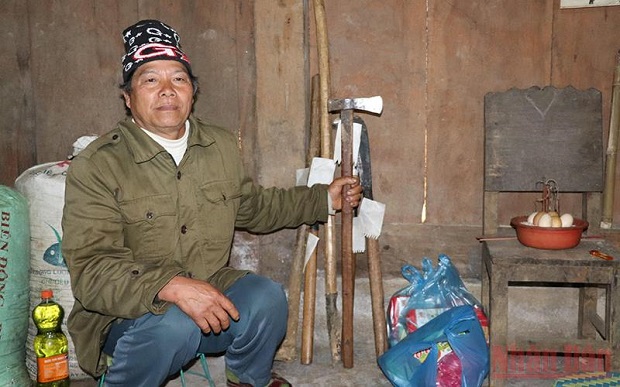H’mong ethnic community in northwestern region, including Son La Province, celebrate their tradition New Year (Tet) festival on the first days of the 12th lunar month. The three-day festival includes many unique customs which have been observed by the H’mong people for generations.

During the New Year festival, people are dressed in their most colourful outfits to visit their neighbours’ houses (Photo: VOV)
According to H’mong people’s calendar, the night of the last day of the 11th lunar month is New Year’s Eve. Family members gather together for dinner to welcome in New Year and pray for a year full of health, peace, and bumper crops.
According to Va Sai Di, an elderly villager in Co Ma Commune, Thuan Chau District, Son La Province, the H’mong people make thorough preparations ahead of Tet with every family member being assigned specific tasks.
Women make new cloths for all family members to wear during Tet while men slaughter pigs and chickens for the New Year’s feasts.
The old man revealed that while ‘banh chung’ (square glutinous rice cake) is a popular offering for ancestors among Kinh and other ethnic groups, ‘banh day’ (round glutinous rice cake) is an indispensable dish within H’mong people’s tray of offerings.
In H’mong people’s traditional belief, the round cake symbolises the sun and the moon, which form the origin of human beings and all things on the earth, he explained.
Therefore, ahead of Tet, people join hand to make ‘banh day’ to offer to the gods and ancestors.

On the first day of the New Year,H'mong men are the first ones to get up and do housework in the family. (Photo: NDO)
The New Year celebration of H'Mong people also has many unique customs, including the tradition that on the first day of the New Year, when the rooster crows, signalling the start of a new day, the men are the first ones to get up and do housework in the family.
During the day, the H'Mong men will do all the housework for the women, from cooking to cleaning chicken coops, washing pigs, and preparing the meals.
The H’mong people consider the man are the breadwinner and pillar of the family, he is responsible for doing every family work on the first day of the new year so that everything will go smoothly in the year.
On the day, H'Mong women wake up later and help their men in collecting water and decorating house to welcome first footers to their home.
Thao Thi Ly, a young woman from Co Ma Village, said that H’mong girls are taught to cook and do housework from young age so that they can win the hearts of the mother-in-law and family of their husbands when they get married.
On the morning of the first day of the New Year, we collect the cleanest drops of water for use with a hope that that all family members will be blessed with good health and luck in the new year, she stated.

During the three-day of Tet, the H’mong people also paste papers on their daily labour tools and place them under the altar (Photo: NDO)
During the three-day of Tet, the H’mong people also paste papers on their daily labour tools and place them under the altar as a way to pay gratitude to the tools for their support over the past year.
In addition, they avoid calling each other by their names, spending money, and eating vegetables, as they are considered taboos for New Year practices.
On the first days of the year, H’mong people dress in their most beautiful outfits to visit each other's houses to enjoy corn wine, eat ‘banh day’, and wish each other a happy new year. They also join various spring activities and exciting folk games on the occasion.